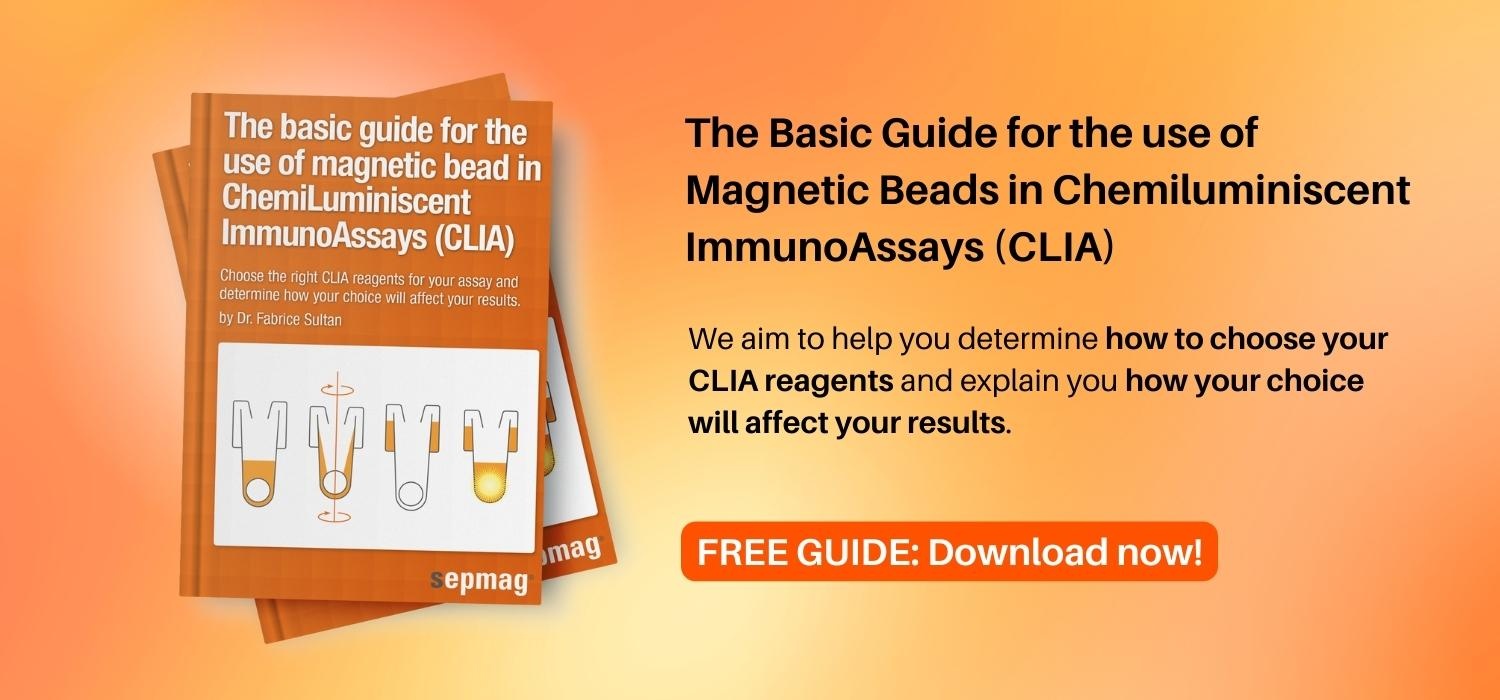In Chemiluminescent immunoassays, antibodies are bound to the used magnetic beads (such as streptavidin beads) in order to detect a certain analyte. However, there are different types of antibodies that behave in different ways and recognize a variety of epitopes.
This post is about using magnetic beads, such as streptavidin beads, in Chemiluminescent immunoassays. If you are interested in this topic, download our free ebook The Basic Guide for the use of Magnetic Bead in Chemiluminescent immunoassays:
When choosing antibody types for your CLIA, you need to consider a certain number of factors. One of the most important considerations is the concentration of your analyte. If your analyte is very low in concentration, you will need an antibody that will combine high specificity and high affinity, but we also have to take into consideration that we might not have a well-defined epitope.
.png?width=278&height=276&name=image_chapter_4_antibody_(1).png)
Polyclonal Antibodies (pAb)
These antibodies tend to be ‘hyperimmune’ and have higher affinity. Use these antibodies if the epitopes are not well defined. In other words, polyclonal antibodies are not highly specific to one particular epitope. Because of this, if polyclonal antibodies are not pre-adsorbed with the secondary antibody, there can be problems with non-specific interactions.
Polyclonal antibodies are typically affinity purified, more so than global IgGs, so their specificity is assured. The level of specificity can range and must be determined before you can relate your antibody reaction to the concentration of your analyte. Always make sure you use fully specific antibodies and take all precautions to validate specificity and any non-specific interactions.
Monoclonal Antibodies (mAb)
If you happen to have a polymeric antigen and decide to use monoclonal antibodies, you should use only one mAb. Using more than one mAb can confuse the final analysis of analyte concentration. However, if you have separate epitopes and well-defined mAbs, you can react your specimen with a mixture of mAbs and analyze each epitope separately.
Monoclonal antibodies can have very high affinity (i.e. < 10-10 M-1) and very high specificity (higher specificity than polyclonal antibodies) for a defined epitope.
Indirect Method
Be aware that sometimes if you coat your beads with your antibody of choice, it may be difficult for the antibody to react with the antigen. In this case, you may need to use indirect means to reach your desired results. One example of indirect means is the use of a spacer (a chemical or biological arm) between the bead and the analyte. Spacers are especially helpful when working with very small peptides or epitopes.
Don't forget to check these posts from our blog in order to get a deeper insight into Chemiluminescent immunoassays:
- Five Points to Consider when Selecting the Proper Magnetic Microsphere for Chemiluminescent Immunoassays
- How to Select the Best Surface for Your Chemiluminescent Immunoassays
- The Five Most Popular Magnetic Microsphere Currently for Chemiluminescent Immunoassays






